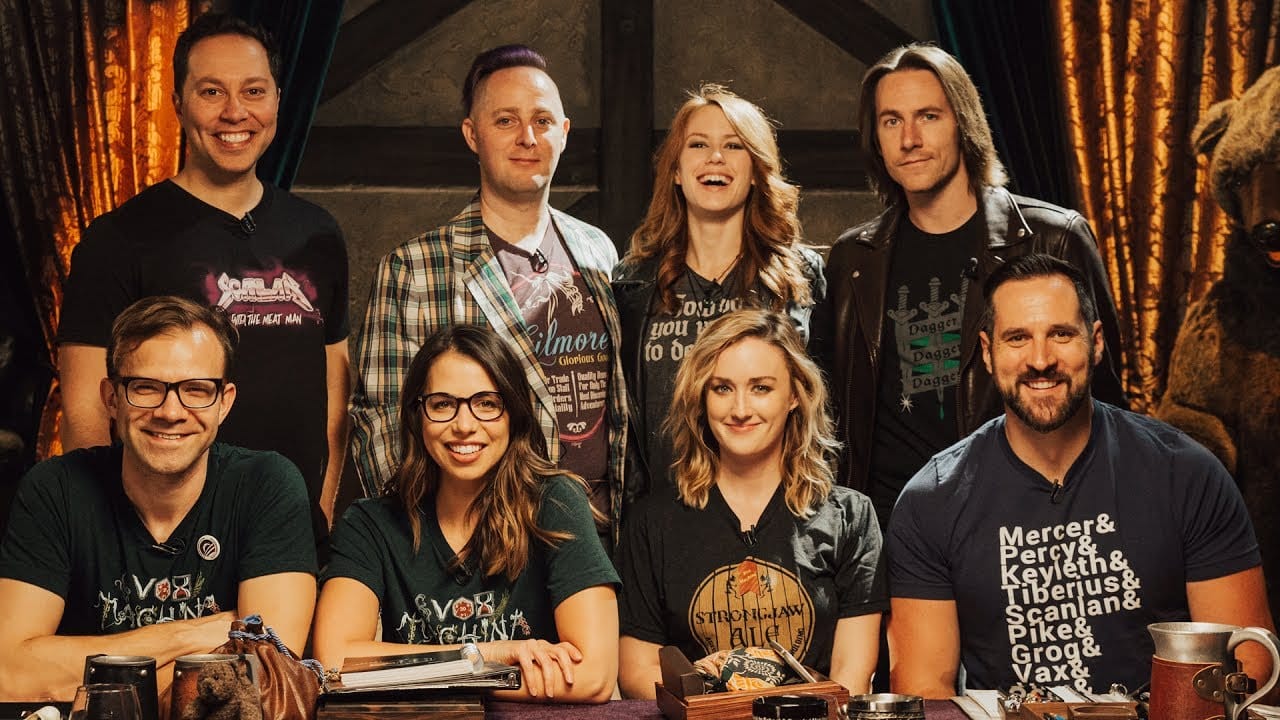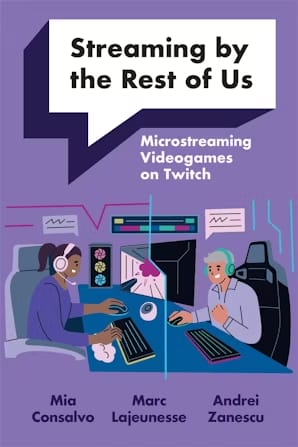- TTRPG Insider
- Posts
- Are There Too Many Actual Plays? A closer look.
Are There Too Many Actual Plays? A closer look.
We spoke with creators in the AP space about whether the TTRPG performance medium had reached a saturation point.
Welcome to TTRPG Insider!
We’re the go-to source for exclusive interviews, analysis, and writing on the TTRPG industry, from Dungeons and Dragons to independent RPGs and everything in between.
If you want to know more, check us out here! If you like what you’re reading, make sure you subscribe.
Today’s news piece is a bit more bloggy than I usually write here at TTRPG Insider. In the following piece, I’m wrestling with a question that I regularly debate myself over, and what it means for the space. It’s also a topic on which I'd like to hear your opinion; have we crossed the point of saturation when it comes to Actual Play shows in the TTRPG space?
Actual play, or the performance of a tabletop role-playing game in a recorded format, is something that’s become increasingly important to the market. A cursory glance through the Tabletop RPG or Dungeons and Dragons category on Twitch shows dozens of shows airing every day, whether they are one-shots run for charity, long-running games featuring friends, or performances by veterans of the space.

Critical Role
Shows like Critical Role and Dimension 20 attract most of the public’s attention, with more than 100,000 listeners a week. But there are also hundreds of shows being posted every week. Some of these are just friends recording a game over a Discord call, while others put on a full-on performance in displays that could be compared to indie art ala Transplanar RPG. It’s a broad spectrum of playstyles, performances, and storytelling to fit your tastes.
They’ve also become essential tools for marketing. It’s very common for medium- to large-sized TTRPG companies to record one-shots or campaigns showcasing their latest game, in hopes of demonstrating how to play and why people should buy it. It’s gotten to the point where major creators like influencer Ludwig and the comedy group SMOSH are getting in on the business (a point where the ‘niche’ has gone mainstream, making it less unique.)
The question I’ve been trying to understand is whether the market has reached saturation, where there are too many APs and no value in creating yet another D&D podcast or Twitch stream. Every time I start exploring BlueSky or Twitter, I see another new podcast or Twitch stream launching. Many of them appear quite similar, either providing a diverse cast, a group of friends, or charity streams. You can find a show to suit most playstyles or game genres on the market. As someone who strives to stay on top of this industry, my instinct tells me that there’s diminishing value in creating your own AP, especially if you want to stand out in our social media-driven TTRPG marketplace and set up your own niche.
But those small numbers don’t appear to disparage creators in the AP space. In fact, they seem more than excited about the kinds of stories, experiences and art that AP can create.

Patrick Perini
“I think that we are at the silent film era of actual play TTRPGs as improvisational performance art,” Patrick Perini, showrunner for the AP podcast Unbalanced Encounters, told TTRPG Insider. “ I think that my show is doing very well and is very heartfelt. But I also think there are a lot of people who are out there (such as Heart of the Dungeon and Game Master Monday) who are doing David Lynchian avant-garde, surrealist content. But we're at this point of asking ‘what can this art form be?’”

Elliot Davis
“AP as a space is just at the beginning of its rise,” Elliot Davis, one of the owners of Many Sided Media, told TTRPG Insider. “I really do think that an artistic medium where there are three to five household names, depending on the person that you talk to, is just getting started. Like, I just, I envision a world where actual play is a more ubiquitous art form. Not quite to the size of like, you know, television, movies, or music. But I think it has a lot of potential.” Davis and the Many Sided Media team launched its own podcast network this year, which will help smaller TTRPG-focused shows to thrive and collaborate.
Both Davis and Perini view the practice as being in its early stages of artistic development, where people are still figuring out how to do it well. They also envision a future in which more artistic expression takes new forms through this medium and may eventually be seen as something more than a niche within a niche.

Whether you’re a designer, content creator or just the biggest fan at your table, TTRPG Insider delivers in-depth reporting, original interviews and regular roundups of the news that you will not find anywhere else. Let us help you become the best designer, player or dungeon master at your table.
Subscribe now and get the advantage you require to excel in this exceptional hobby and industry.
How Many APs Are There?
This is a tricky question to answer because the internet makes gathering data about public products and niche subjects without expensive research tools extremely hard. That said, we have some metrics available to us.
There’s at least 1,000 APs identified in the directory RPGAP.com, although all of those are self-submitted and include several old shows that have not updated in years.
The best metric I’ve found is Twitch, which hosts TTRPG content every day across dozens of channels. The D&D category on Twitch averaged around 623 viewers across 65 streams in October 2025, according to Twitchtracker.com2 . The general tabletop RPG category averaged 1,501 viewers across 27 streams at that same time. These numbers fluctuate from month to month, but remain relatively small when compared to more popular properties, such as the recently launched Arc Raiders.
Simple search results found dozens, if not hundreds, of TTRPG and AP creators on Spotify and YouTube, although obtaining direct statistics is challenging without expensive software.
Understanding AP as Something Other Than Labor
Part of my question, I must admit, is based on the concept of AP performance as labor. If I intend to pursue the creation of a theoretical AP, I’d hope to do so in a way that may eventually lead to some benefit down the line, whether it is earning money or gaining some renown3 . However, that belief may be what sets me apart from others in the space.
“I don't think we've reached a point of saturation, but I also think that expanding isn't necessarily the point either,” Cat McDonald, one of the organizers at the AP-focused Rainbow Roll Awards, told TTRPG Insider. “I think that just like anybody who's making movies or writing books, everybody's going to create something unique to them, and everything is going to tell their own. Everyone's going to tell their own story in their own way.”
“Whether somebody is creating just for the sake of creating or trying to become super famous, creation is in itself a valuable and important exercise,” McDonald emphasized. “And it's beautiful.”
In other words, McDonald argued that many APs were “art for art’s sake.”

McDonald’s words reminded me of Streaming by the Rest of Us, an academic look at “microstreamers” on Twitch. While most people assume that Twitch streamers join the platform to become the next big thing, only 0.5% of creators reach the status required for monetization. The other 99.5% of creators are streaming to single-digit viewers or fewer. Why do they keep doing this? Sociologists Mia Consalvo, Mar Lajeneunesse, and Andre Zanescu interviewed a number of these creators about the practice.
They found that the vast majority of streamers were not trying to climb the platform and build a significant following. Instead, it allowed them to engage in “liveness” and adopt a persona different from their usual one for the sake of the persona.
Liveness….helps streamers in multiple ways- in interacting with others and forming communities with them as well as through the production of authentic performances.
In other words, the ‘micro-streamers’ are enjoying streaming because the performance and practice itself is enjoyable to them, not because it’s the next step toward becoming the next Emiru or Hasan Piker.
The same principle could also apply to many of these smaller APs. Some of them may be using it as an opportunity to play and perform in the same way your aunt enjoys being in community theatre. Others use it as a way to ensure they get to play while also building a community around the love for their particular story. And some find the fact that they’ve recorded their TTRPG game on the internet to be valuable. Their art form may be recognized in award shows like the CRIT Awards or local Webfests. But for most, it is performing for the sake of the art.
That desire to create is essential, but it will also require funding to expand and elevate. That may be its most significant challenge going forward, considering the limited amount of advertising dollars in the TTRPG space and questions about whether Patreon-funded projects are viable beyond covering basic expenses. But that could also be an area for innovation.

But what do you think? I would appreciate your input on this question. Are there too many Actual Plays? Is it a burgeoning art form, or has it reached its peak potential?
Thanks to Cat, Patrick, and Elliot for speaking with me on this.
What are your thoughts? Send any scoops, tips or press releases to [email protected].
1 There’s a fascinating conversation to be had about what differentiates an AP game from a home game when it comes to diversity, performance, and the ‘effort’ involved, but it’s one for another day.
2 It should be noted that these metrics are not necessarily the most reliable and should be taken with a grain of salt, especially in light of recent allegations that Twitch is shrinking numbers by not counting lurkers. I also suspect the numbers are inflated by significant events, such as Critical Role’s weekly broadcasts, which bring in 5-figure numbers of viewers every week on average.
3 This assumption likely reveals more about myself and my tendency towards a “hustler mindset” than about the AP space. I’m -really- bad at relaxing and doing things for fun’s sake.